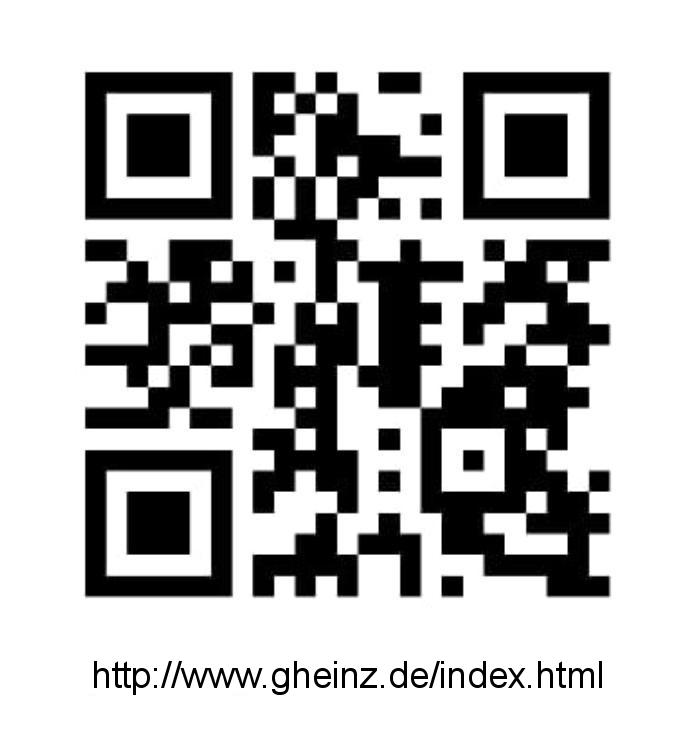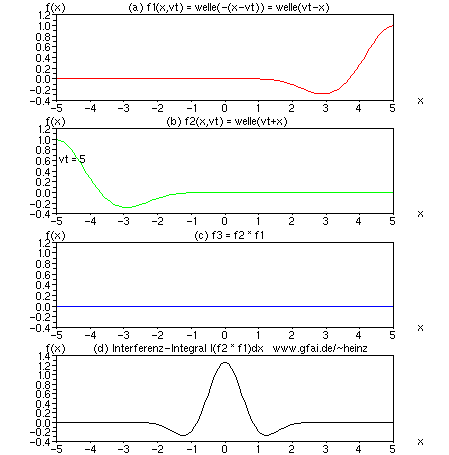
Search on www.gheinz.de with Google:
www.gheinz.de
Main Directories
-
ToC: Foundations of Nervous Communication (History)
(english,
german)
-
ToC: The Discovery of Acoustic Photography
(english,
german)
-
ToC: Television and Press Reports (german)

-
ToC: Politik, Wirtschaft, Gesundheit (german)
-
ToC: Publications (engl./germ.)
-
ToC: Technical Docs (german)
-
ToC: Hobby-Projects (german)
-
ToC: Annual reports (german)
-
ToC: Project reports (german)
-
ToC: Spectrally controlled pulse welding machine
(german)
-
ToC: Zu verkaufen, zu verschenken (german)
-
Brillante Zitate
(german)
Some Details

-
Waves on Wires -
The Discovery of Interference Networks -
What connects Acoustics, Optics and Nerve System?
(german,
english)
Foundations of Neural Communication
-
ToC: A Second Informatics (Properties of IN)
(german,
english)
-
ToC: Bio-Models of Nerve-Nets (german, english)
-
Book "Neuronale Interferenzen" 1993
(german,
ToC english)
-
Beziehungen zwischen Faltungs- und Interferenzintegral als Verbindung zwischen Hören und Sehen
(german)
-
Just Coincidences? Calculations on the Nervous System
(german,
english)
-
Pain as Interference Overflow (german, english)
-
Pioneers of Interference Network (IN) Research
(english)
-
The holographic brain - legacy of Karl Lashley, Donald Hebb, Lloyd Jeffress, Karl Pribram and Andrew Packard
(english,
german)
-
A Hypothetical Brain-Computer Interface. Plenary Invited Speech NF2002 Havanna, p.9 (english)
-
Können wir durch Nerven sehen - erste Bilder der Gedanken?
(german)
-
Wellen im nicht-euklidschen Raum
(german)
Acoustic Camera

-
ToC: Birth of a New Technology
(english),
(german)
-
Who Introduced the Name "Acoustic Camera"?
(english)
-
World Patent WO 2004/068085 A2. Published in 30 countries.
(PDF german)
-
Rekonstruktion akustischer Bilder
(german)
-
Heinz, G.: Akustische Photo- und Kinematographie. Eingeladener Vortrag zum
Helmholtz-Symposium der PTB Braunschweig am 29.10.2002.
Einladung,
PDF-Vortragsfolien:
1-21,
22-47.
-
Acoustic Films between 1997 and 2004
(english)
-
ToC: Music and Sound Visualisation
(german)
Klima und Bevölkerungsexplosion

-
ToC: Explosion der Bevölkerung verursacht Kriege, Erderwärmung und Kohlendioxid
(german)
-
E-Mobile: Umrechnung von kWh in Liter Benzin/Diesel
(german)
Verschiedenes
-
Wer erfand die Binärrechnung? (german) mit der Übersetzung "Explication de l‘aritmètique binaire" 1703 von Gottfried Wilhelm Leibniz (german)
-
Digitalisierung des Telefons: Erste Schaltkreisentwürfe aus Ost-Berlin
(german)
-
Kann man Binärrechner schneller machen? Einführung in die CMOS-Gatterdynamik 1987
(Dissertation)
und (Kurzfassung)
-
Schnelle Datenpfad-Algorithmen für CMOS-ASIC (1990). Datenpfad-Generator für Gatter in Baumhierarchien
(PDF german), Slides (english)
-
Elektrodynamik des Meeres - haben Fische einen siebten Sinn? (1985)
(german)
-
Brillante Zitate (german)

Awards
- 2008 DVS/Abicor-Innovationspreis
Bericht,
Urkunde,
Bilder
- 2005 Nominierung Deutscher Zukunftspreis
Teams,
Urkunde,
Bilder und Filme, Medienresonanz
- 2003 Innovationspreis Berlin-Brandenburg
Bericht,
Presse,
Urkunde,
Plan
- 2001 Otto von Guericke Preis Bericht,
Bilder, Urkunde
- 1987 Nationalpreis II. der DDR
Urkunde
- 1985 Informatik-Kurse an der Volkshochschule
Urkunde
- 1984 Erster Berliner Schaltkreis KA601, 1980
Urkunde
- Praktika, Bachelor-, Master- und Diplomarbeiten
Link
"Wissen macht einsam. Man darf
der Herde nicht mehr folgen."
top

Impressum
Do not hesitate to talk about your comments, remarks or ideas to
info@gheinz.de.
Thanks in advance!
File created Sept. 30, 1995
permanent edited and modified
new layout June 30, 2005
latest new layout Nov. 28, 2024
© Copyrights for all subsequent pages: If not otherwise noted, pages are public domain.
Commercial and non-commercial usage of pages or images of the author is allowed, if authors name and the URL is noticed. No liability for external contents, copyrighted contents or links.
© Kopierrechte für alle Seiten: Wenn nicht anders bezeichnet, sind die Seiten "public domain". Kommerzielle oder nicht-kommerzielle Nutzung von Seiten und Bildern des Autors ist erlaubt, wenn Name des Autors sowie URL angegeben sind. Für externe Inhalte und Links wird keine Haftung übernommen.
Number of visits since Dec. 2021:







